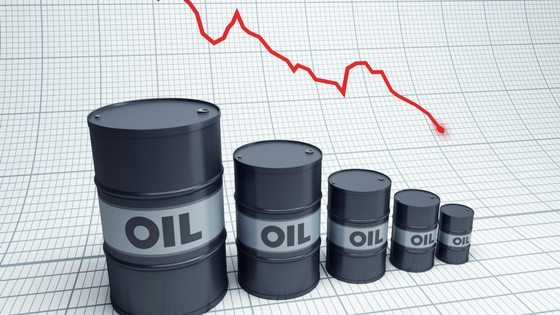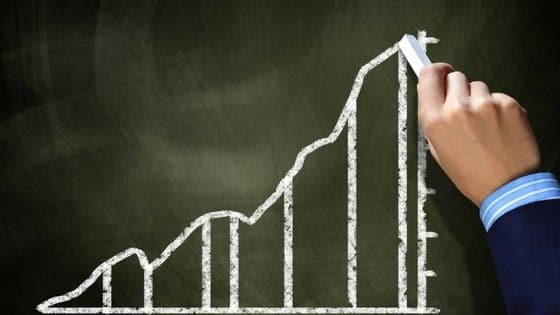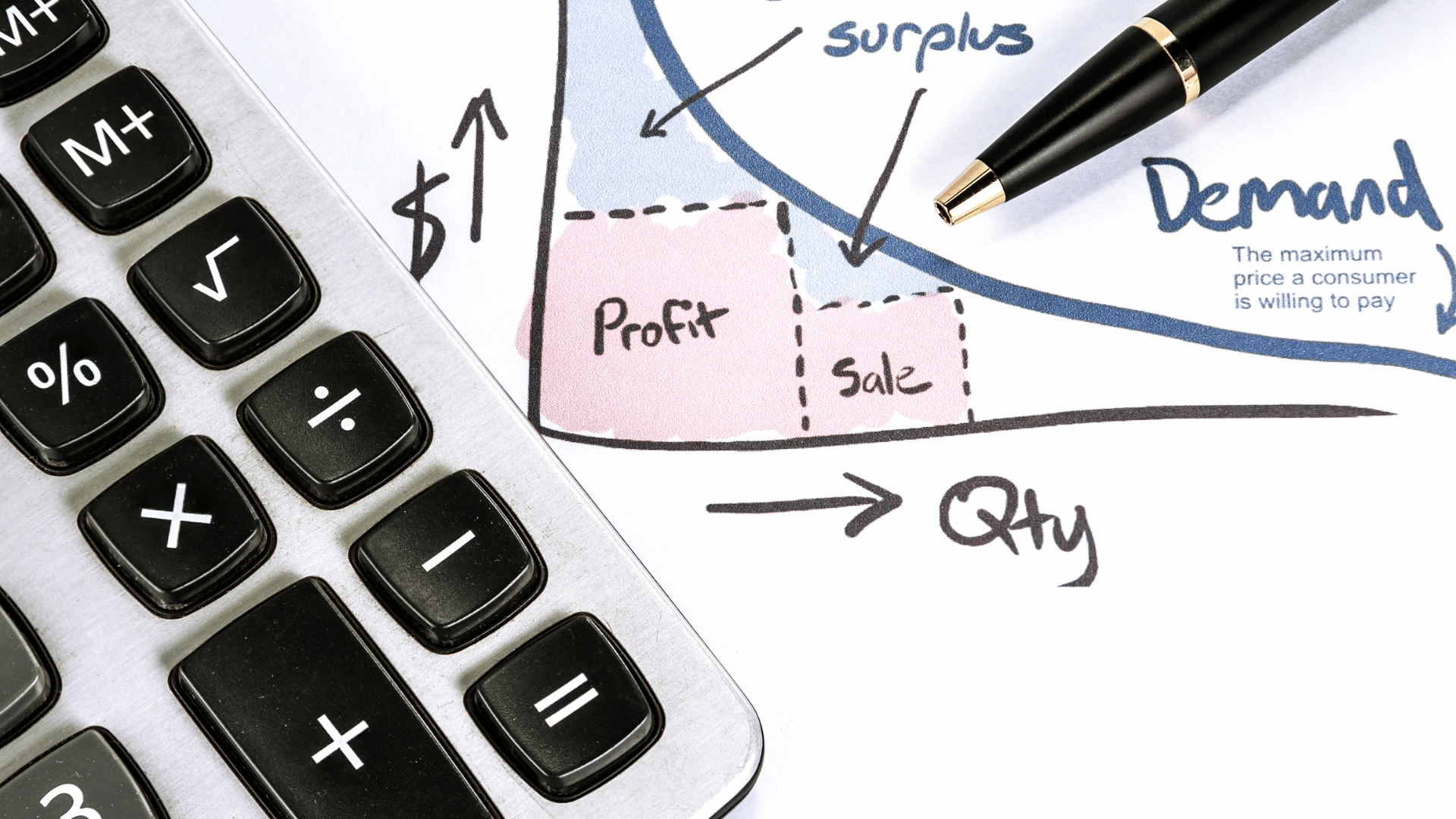
What are the Types of Price Elasticity of Demand? Avoid a Messed Up Pricing Formula 🛢️
What are the types of price elasticity of demand? More importantly, how do they impact your pricing strategy? If your pricing decisions have been feeling off lately—customers resisting price changes, sales fluctuating unpredictably, or margins shrinking—you might be relying on a formula that doesn’t fully capture how demand reacts to price shifts. Understanding the different types of price elasticity of demand is the key to modelling prices effectively and ensuring your strategy aligns with customer behaviour.
>Download Now: Free PDF A Capability Framework for Pricing Teams
For example, consider the influence that this famous Business Economics 101 chart still has on most business executives’ view of price and revenue management. Yes, there’s a huge influence!
The factors affecting the price elasticity demand formula are shown below:

Take a look at this price elasticity of demand chart for a moment.
This chart basically sums up what most executives and leaders know about pricing (and often what they don’t).
Because of this price elasticity of demand formula, most sales directors believe that price and volume are always correlated. They think that increasing prices lead to fewer sales, lost volume, and few new business opportunities.
Similarly, because of this price elasticity of the demand chart, many finance directors believe that increasing all prices by 3% is a great idea to instantly increase profit. What they don’t know is how it can be a terrible idea and highly disruptive in the market.
In basic terms, types of price elasticity of demand show that price and volume are correlated.
An elastic demand creates a major change after a minor price change. Say, you make a slight price increase and your demand decreases all the way down to zero. Or when you apply a price slash on your products, demand increases sharply up to infinity.
Inelastic demand is when there is no change in product demand after whatever price changes were made. This is often applicable to essential products/goods. A unitary elastic demand is when the price change produces the same amount of change in demand, whether it is a price increase or decrease.
Pricing capability correlates with other factors affecting price elasticity. In other words, the demand changes according to the necessity and convenience of products. Take food stalls in cinemas and stadiums. Or even the price of in-flight add-on meals that are strategically priced for profit and convenience.
Take salt, medicine, petrol, or utilities for example. As these are essentials, people will buy at whatever price because there aren’t a lot of alternatives available. Then there are limited edition products, like a new pre-order book from your favourite author. Or a musician’s freshly released song/album. These are seasonal items just like holiday-themed products (Christmas or Valentine’s Day).
Table of Contents:
I. Role of Business Economics: How to Avoid Messed-Up Pricing
II. The Role of Price Elasticity in Price Rise Decisions
III. What is Business Economics? – Explained
IV. The Power Of Demand Pricing In The Music Industry
V. What Is Price Elasticity of Demand Modelling and Why You Need It

Types of Price Elasticity Demand: Avoid a Messed-Up Pricing Formula
What do you think is the problem with the factors affecting types of price elasticity of demand?
The answer:
1. The line on this chart is not fixed and can move on an SKU-by-SKU and segment-by-segment basis.
2. A broad-brush approach to pricing is risky and can lose your hard-earned margin, volume and customers.
3. That this economic 101 chart is an incomplete view of price profit elasticity and delaying price innovation in B2B businesses.
Why are the types of price elasticity of demand and its formula not always true in the real world?
To explain further:
This pricing and economics price elasticity of demand formula is the root cause of your post-price rise pain. Things like:
- Issuing credit notes straight after a price increase.
- Offering excessive discounts to win and maintain business.
- Cringing at the price exceptions report and a large spread of special pricing arrangements.
In the real world of business economics, price and volume are not always correlated. Even though we have been taught otherwise at university.
If you don’t believe me, look around you. There are many instances of highly-priced products that also have market dominance. The same case is even in B2B commodity businesses and industries.
For example, certain cooking oils, timber, adhesives, chemical surfactants, and agri-blends, can be classed as commodity products. All have strong market dominance and high relative prices.
For some of these products, the role of business economics comes into play. But, again, even commodities products can contradict the traditional role of economics price elasticity of demand formula.
Why does the line move with the different types of price elasticity of demand?
On an SKU by SKU (stock-keeping unit) basis, the price-volume chart that we all know does not always translate, and the line actually moves.
A belief that the line never moves has become a latent rule in our brains and one which is positively reinforced during pricing and business economic studies at university.
Applying this rule across individual SKUs and product categories is incomplete and lead to margin loss.
Contrary to the price elasticity of the demand formula, value at a segment and SKU level is often relative, intangible, and dependent on the buyer. It is a dynamic concept and it’s the job of a pricing team to continually search, identify and capture value to secure low-risk price premiums. It’s a lot like picking up lots of 50-dollar notes off the floor.
A good pricing team never sets a price and then forgets about it for months – that’s it, my job is done, let’s see the money rolling in. It doesn’t work that way… Rather, a pricing team battles daily to disprove this price elasticity of demand formula chart to generate more revenue and margin for the business.
Even if the team thinks they’ve identified value, a pricing environment can and often does change. This is why the line on the price elasticity of demand formula chart moves, and a pricing team needs to constantly think about where it is and where it’ll be in 6-9 months.
A good pricing team is never complacent. They continually test and learn from focused and tactical price actions using the scientific process and a range of price methodologies.
A team is always on the lookout for discovering sources of value and understanding how the market responds to price and perceives value.
They seek to capture additional price premiums whether this is in the product itself or the supply chain, network effect, or community.
A pricing team is unlike a sales and finance team because it seeks to quantify intrinsic value and monetise intangible value to boost revenue and margin. This is a quantum leap from simple cost-plus pricing – you don’t need a pricing team for that.
The role of business economics concerning creating a good pricing strategy is to help the pricing team to analyse data. The decision then will derive from the product of economic theories and quantitative data.
Successful pricing teams challenge conventional and often incomplete views derived from traditional Business Economics theory:
- You don’t need a pricing team to just sign off and manage discounts and administer markups.
- Excessive price reduction to push volume is not the answer to profitable growth
- Your pricing team should be advised that dropping your list price by 7% so your distributors are happy, does not really make them happy it just lowers the bar for everyone else and encourages price wars.
- They would never just increase customer prices by 3% across the board to cover output costs because their profitability analysis said this was a good idea.
A good pricing team will dispel myths, and rumours about the market and competition; test assumptions and give you viable pricing options. Lastly, it explains the trade-offs you’ll end up making with every go-to-market action.
Implications Of The Types Of Price Elasticity Of Demand
- The role of business economics is to provide analysis derived from economic theories and business practices. Which can help in creating decisions that will provide the most efficient way to meet profit and demand.
- In many instances, the opposite is true. Economics 101 is outdated, harmful, and a hindrance to pricing innovation and profitability. It is by fully understanding the role of business economics that a business can fully achieve profit maximisation.
- The role of the pricing management team is to complete this picture for the business. This is to help make more informed pricing decisions and drive sustainable growth and profitability in the process.
- But of course, taking a price increase is never as simple as the price elasticity of demand formula makes out. It takes pricing competence, and know-how to sort through the huge amounts of transactional data to find value. Then analyse this data to optimise prices across thousands of products; customers and segments – to be more exact it takes an expert pricing team.
- A key role for a pricing management function, therefore, is to challenge traditional economic principles every single day. Ensuring you capture the full price and value of your offer no matter the situation.
〉〉〉 Get Your FREE Pricing Audit 〉〉〉
Conclusion: Types Of Price Elasticity Of Demand
In very simple terms, you need to break old habits of thinking about price and volume. Otherwise, you risk overcharging some customers and undercharging other customers.
Business Economics 101 is not really inaccurate. It’s incomplete and can expose your business to risk. In fact, it neither tells the full story about your pricing power nor informs you of the risk of margin erosion. When you use price incorrectly.
Conventional business knowledge based on well-known economic principles may be widespread. But that doesn’t mean they’re always effective and applicable to set and manage price and revenue.
Even if you developed a new segmentation last year and painstakingly assigned customers; it’ll always feel like a work in progress because of the market changes. Here are other ways to make a strategic plan for business to improve your pricing.
Price Elasticity in Making Better Price Rise Decisions
How confident are you making price rise decisions? Are more customers complaining that your prices are too high (or threatening to find an alternate supplier) when you put your prices up or issue your annual price increase? Knowing the results of the factors affecting price elasticity is the equation to make better-informed and detailed price rise decisions.
You may think that a small, annual price increase of circa 3% is fair. And although your price increase is below CPI (Consumer Price Index), some of your customers may think otherwise. It may leave them feeling that you are unfairly raising your prices.
Price rise management (like all price leadership decisions) needs to be handled with care and skill. Setting the right price is difficult. But it also protects hard-earned margin and sales volume. So, simply rolling out a 2-5% annual increase across all products and customers may be easy. But often, it leads to margin erosion and missed revenue opportunities. In this case, you will lose customers using a blanket price rise approach.
In this article, we will provide a quick refresher on price elasticity. We will then explain how your pricing strategy options and skills help pricing managers gauge the market’s response to a prospective price rise, discount, or marketing campaign. We then explain how to take full advantage of the powerful link between price and profit by incorporating profit curves within your price elasticity models.
Types Of Price Elasticity Of Demand: What is price elasticity?
Price elasticity modelling helps price managers figure out how their customers are going to respond to a change in price (e.g., a price rise, an annual price increase or tactical discounting) when considering the best pricing strategy options. Most customers tend to be quite aware of the prices of products or services they buy on a regular basis.
Think about a product you like and buy regularly. Do you know when the price of your favourite product has been discounted? How do you feel when the price of your favourite product has been increased? Do you stop buying the product because the price is too high? Or do you keep buying it regardless of the increase in price?
Some of the industries that often show price elasticity from time to time are cars, houses, and furniture. While industries that show an inelastic demand, regardless of the price are gasoline, salt, beef, textbooks, and prescription drugs.
The conventional microeconomic theory states that we tend to buy a product or service more when it is cheaper and less when it is more expensive.
Take cigarettes, for example, Tobacco companies across the board have continually and substantially increased the prices of a packet of cigarettes (now $20 for a packet of 20) while maintaining steady volumes (the amount that people smoke) over time (i.e., we keep buying them) despite all the government campaigns (or education) and legislation on suppliers to directly advertise their product to influence consumers.
Interestingly, tobacco companies now make considerable profits on the holding of large cash balances before paying the collected tax or duty to the tax authorities. It could even be argued that they are paid to collect tax on behalf of the government!
When certain items are inelastic – i.e. the demand curve is pretty much flat no matter what the price. In simpler words, people keep buying them in the same quantities when the price changes. Some people keep buying products regardless of the price. They value the product that they are willing to pay extra.
Of course, this is why the Government puts a tax on petrol sales, alcohol, and cigarettes. It’s a lot similar to Giffen Goods (see blog on product pricing) when demand actually increases as we increase the price.
This value-based purchase response phenomenon is not just isolated to cigarettes or B2C product pricing. It is also applicable to B2B product pricing. Variation in price response (i.e., how individual customers respond to prices) is a key principle of value-based pricing. In fact, it’s a relatively advanced pricing principle that seeks to monetise variations in pricing strategy options. So, do this by understanding customers’ willingness to pay via their unique value drivers.
To understand why individuals attach unique value drivers to certain products, read more about customer value pricing.
This is the formula for price elasticity of demand:
Basically, it calculates the size of the price change on demand by identifying the percentage change in customer demand. Then, you divide that by the percentage change in price.
Let’s look at an example. Say that a retail company increased the price of one of its dresses from $100 to $120. The price increase is $120-$100/$100 or 20%. Now let’s say that the increase caused a decrease in the quantity sold from 1,000 dresses to 900 dresses. The percentage decrease in demand is -10%. Plugging those numbers into the formula, you’d get a price elasticity of demand of:
Price elasticity of demand = Percent change in Quantity demand/Percent in Price change
Note that the negative is traditionally ignored. In addition, the absolute value of the number interprets the elasticity metric. It’s the magnitude of distance from zero that matters and not whether it’s positive or negative.
Types Of Price Elasticity Of Demand: The higher the absolute value of the number, the more sensitive customers are to price changes.
Take Reliance JIO from the mobile industry in India, for instance. Initially, JIO introduced its network at very low-priced data rates with $6 for 1GB data of more than 2 months. This includes free calls and roaming services. Now, compared to the market, it charged $4 for the same service for 1 month. Obviously, customers preferred and relied on JIO after it released its commercial mobile services in September 2016.
Since then, it only took JIO to reach its 130 million mark. In fact, at the end of March 2018, JIO showcased a subscriber base of 187 million. That means that JIO added close to 9 million users in the months of April, May, and June in that same year. Nowadays, JIO has expanded its collaboration and commerce partnership with Google and Facebook including their very own made-for-India smartphone.
What are the factors affecting types of price elasticity of demand?
Is your product a necessity or a luxury? Assessing this informs you if you are a leader or disruptor in the market. It will help in predicting the change or reaction of consumers with regard to your product service or demand. Products that belong to a luxury category tend to show an inelastic demand. While basic necessities like food and medicine receive an elastic demand.
Are there available substitutes within the market from competitors? If there are similar services/products in the market, you will be intentional and calculating in making the best price rice decisions. There’s a possibility of customer churn if you rush a price rise decision at any given time.
Consider the customer’s income that is spent on your services or product. If your customers spend a large percentage of their income on your products and services, then this often shows an elastic demand. In this case, any reasonable price change will not dramatically affect consumer spending.
Observe and keep track of the time it takes to generate a response from customers and their buying behaviour. Always target the long-term and sustainable time frame when planning your pricing strategy options. In truth, reasonable and acceptable price changes from the perspective of consumers matter. Always consider their possible reactions and if a price rise will risk customers switching to your competitors.
〉〉〉 Get Your FREE Pricing Audit 〉〉〉
How can you make money from the best pricing strategy options?
Now we know that price elasticity is closely related to the concept of price response. It naturally follows that tracking the relationship between price variation and price response is key to drawing accurate profit curves in your pricing strategy options and modelling.
Profit curves in price elasticity models are crucial. This is because they help pricing managers identify the most profitable price point along the demand curve.
Combining profit curves within pricing strategy options is a very lucrative, yet surprisingly under-utilised concept. Most commercial teams fail to add profit curves to price elasticity models. Instead, they favour outdated, established, and convenient methods. That ranges from cost-plus and copy-the-competition prices methodology (match-to-market pricing).

What is Business Economics? 📊
What is Business Economics?
Business economics, also referred to as Managerial Economics is a discipline-based heavily on economic theory. The major theories of economics seek to define and measure different concepts like supply, demand, price, costs, competition, etc.
Business Economics consists of a variety of financial instruments and statistical methods (covered below). It is common practice for business leaders, for example, to utilise different economic concepts and theories as a ‘go-to’ to solve most of their financial problems even when they may not be the most applicable tool to use. The application of economic theories, concepts, and tools in business decision-making — referred to as business economics or managerial economics.
The Role of Business Economics in the Types of Price Elasticity of Demand
Business economics is considered to be a decision-making science. Decision-making is a process of choosing the best course of action from the available options. Thus, the question in business leaders’ minds is: Why is business economics essential? What is the role of business economics?
Listed below are some of the responsibilities and roles of business economics:
- Recognising, evaluating the problems, and finding solutions
Business economics covers several important concepts, like Demand and Supply analysis, short-run cost and Long-run costs, and the Law of Diminishing Marginal Utility. These notions support business leaders in recognising and analysing problems and finding appropriate solutions.
- Determine, analyse different internal and external business factors
Economic tools such as econometrics assist business leaders to identify and analyse different internal and external business factors and their effect on the functioning of the business.
- Framing different policies
Business economics aids business leaders in framing different policies such as pricing policies and cost policies based on economic study and findings.
- Foresee the future
By studying different economic variables, like cost production and business capital, businesses can predict the future to their advantage.
- Create relationships between various economic factors
This helps in creating relationships in market structure, income, profits, and losses. It guides business leaders with effective decision-making and running the business competitively.
Recently, a new trend emerged concerning the combination of business economics and operation research:
- inventory models
- linear programming
- the theory of games
Advantages and Disadvantages of Business Economics in the types of price elasticity of demand
Business Economics may play a significant role in an organisation but it also has its drawbacks. Let’s discuss some of its strengths and weaknesses.
What does Business Economics do for you?
- Provides tools and techniques for managerial decision-making.
- Gives answers to common business management problems.
- Produces data for evaluation and forecasting.
- Supplies tools for demand forecasting and profit planning.
- Guides the business economist in creating business policies.
- Helps the business leaders know both internal and external factors influencing the business.
The Downside in Business Economics
1. The science of business economics is quite new and is subject to uncertainty in some scenarios. However, business economics focuses on management analysis according to financial and cost accounting data. Therefore, the credibility of this information relies on the accuracy of the financial accounting data.
2. The basis of the analysis is often on past information. If a new scheme is introduced, the conditions change and the conclusions can’t be speculated using the same past information.
3. Business Economics is exposed to the personal preferences of the manager. This affects his/her final decision to a certain extent. It can also be a costly process because companies normally require a number of managers to guarantee functioning organisational processes.
Types of Price Elasticity Demand: The Role of Business Economics in Organisations
Business economics is a wide-ranging discipline that covers most of the basic problems a business leader or a company faces. It connects two disciplines in one (management and economics) with the aim of applying theory to business problems and situations. The management discipline, for example, concentrates on concepts that help the business decision-making process.
Key Learnings
- Most companies that aim for maximum profits oftentimes face uncertainty. Thus, they need to present themselves with new innovations in their product marketing and quality.
- There are also some challenges in business economics. Sometimes the problems organisations are very unique to the theories and approaches. Hence, business economics concentrates on the components and factors within operational capacity.
〉〉〉 Get Your FREE Pricing Audit 〉〉〉
Summary: Types of Price Elasticity of Demand
Business economics is a connection between two disciplines – management and economics. The main area of study in business economics considers both economic and non-economic factors.
The field of business economics deals with economic principles, typical business practices, strategies, the acquisition of required capital, the effectiveness of production, revenue generation, and overall management strategy.

The Power Of Demand Pricing In The Music Industry 🎸
Demand pricing has been criticised yet again by experts and music fans alike. Fans say they are being priced out of concerts, with some tickets doubling in price. At the same time, more artists from Bruce Springsteen, Harry Styles, ColdPlay, and BlackPink are choosing demand pricing to set their ticket prices. We’re wondering, if demand pricing is the best way to price optimal music ticket prices considering the backlash from music fans.
Ticket sales distributors certainly believe that demand pricing is good for the music industry. Representatives from a major online ticket distributor have recently released a statement. It says “Introducing dynamic pricing was an important shift necessary to maintaining the vibrancy and creativity of the live music industry.”
The problem is, though music ticket pricing is fundamentally flawed, to begin with. Primarily because the leading source of a ticket’s market value is based on ticket tout pricing.
In this article, we will continue to discuss and evaluate demand pricing in the music industry. Followed by presenting some potential improvements to the system to address any imbalance in the current price value equation.
We argue that there’s a great opportunity for ticket sales distributors to become advisors to artists and promoters. As they have more objective data and analytics on ticket prices and demand than anyone else.
We believe that distributors in the music industry are in a great position to adjust the discrepancies in market value created by ticket touts by using advanced analytics such as Baysesin probability analysis and customer value analysis.
What Is Demand Pricing?
Demand pricing is another term that refers to dynamic pricing. In regards to the music industry, demand pricing alters the price of tickets based on demand for the concert. Typically, demand pricing for music tickets was most common in the US. In recent months, however, demand pricing in the music industry is moving to different regions of the world.
Harry Styles, for example, recently selected demand pricing to price his concert tickets in the UK. Other artists such as Coldplay and Blackpink have also chosen to opt for demand pricing to price their tickets. Demand pricing, therefore, is becoming an increasingly popular pricing method in the modern music industry.
Objections To Demand Pricing In The Music Industry
But not all artists want to use demand pricing to set prices for their tickets. Others have been outright rejecting demand pricing. Many artists believe, for example, that demand pricing overprices tickets for fans. A large proportion of artists prefer to use fixed prices to keep costs low for fans from all income groups.
Likewise, a growing number of fans are becoming wary of demand pricing. For example, fans have particularly disliked the online page price optimisation element of a dynamic pricing system. This is when ticket prices increase while you are on the buying page.
Many fans believe on page price optimisation is unfair. This is because the price stated on a buying page often changes as the demand pricing system matches the demand from resale websites to update the final price. An increasing number of fans are consciously choosing not to buy concert tickets online when they detect prices are set using a dynamic pricing system.
How Demand Pricing System Works On The Music Industry
In light of the above feedback from artists and fans alike, then, we wanted to look further into some of these concerns; and follow up with a few suggestions on how to improve demand pricing in a dynamic pricing system for concert music tickets.
1. What price logic (algorithm) sets prices in the music industry?
Reference prices (i.e., the original ticket prices) are set by the artists and promotors.
Pricing strategy and price range parameters on all tickets are also set by the artists and promotors, including fixed and market price points.
The final price, however, is set by a price algorithm from third-party sales and ticket distributors. The implementation of a pricing strategy is run by ticket sales distributors via a dynamic pricing system.
The essence of the pricing strategy employed by artists is based on determining the market value of individual tickets.
The demand pricing system developed by the sales ticket distributor automates this strategy by using third-party data inputs from secondary ticketing sites such as Viagogo and StubHub. This data functions to calibrate original prices (set by artists) with prices in secondary sites.
In terms of conducting price calculations, the price algorithm for pricing music tickets uses the original ticket price as its price floor (the base price for the ticket) and external prices in websites like Viagogo as its reference point for demand/market value. It then compares the two reference prices; and then recalculates the final price point based on the difference or the variance from the baseline price.
All of the above calculations are done in real-time using the dynamic pricing system. This means that while fans are on the site looking at one price, the demand pricing system is searching for what the real-time demand is for that ticket at that second. If it finds that the demand is high, for example, it will recalculate the base price according to demand and the fans will pay more.
The real source of contention, though is not the methodology, but rather the source of data used to estimate demand.
Industry experts argue that increasing tickets based on sites like Viagogo is unreliable and lacks objectivity because pricing is speculative.
The problem fans have, therefore is not really with demand pricing as such. But rather, using a price algorithm fuelled by unreliable price data sources like Viagogo and StubHub.
2. How do artists make money from a demand pricing system?
Artists make money from demand pricing because it ensures that their tickets are sold at the market rate and not below. Interestingly, though most artists choose to sell some of their tickets at a fixed price. An increasing number are choosing a combination of fixed and demand pricing to set final concert ticket prices via a dynamic pricing system.
Bruce Springsteen, for instance, sold most of his recent concert tickets based on a fixed price tier and the rest using demand pricing.
The reason artists may choose to do this is that they want to attract fans to their concert when tickets first come out using fixed price tiers that are closer to the original prices the artist sets (i.e., the reference price).
For example, fixed prices for the recent Bruce Springsteen concert were set from $60 to approximately $400 for more expensive seats. 88% of tickets were sold within this price range. However, once the majority of tickets were sold, Bruce decided to implement demand pricing to ensure the rest of his tickets – regardless of seat type or position – were sold at the market rate. Ticket prices for the same concert increased to $5000, which is 83 times more expensive than the original fixed price.
Harry Styles, however, has decided to sell all of his UK concert tickets using demand pricing. The reason was to increase average ticket prices and sales for each of his concerts.
As we know the price algorithm in the music industry is based on less than reliable sources of demand/market value; and he didn’t launch his ticket prices using lower fixed prices, like Bruce. This price move from Harry Styles, therefore, indicates that he wanted to optimise revenue from ticket sales across the entire sales and pricing cycle. The main reason for doing this is to generate more additional profit on a per-ticket basis than musicians like Bruce implementing lower fixed prices to drive sales at the beginning of the sales cycle.
3. How do third-party ticket sales distributors make money from demand pricing?
Third-party ticket sales distributors make more revenue and margin when prices on the official website match what touts are charging on secondary sites like Viagogo and StubHub. They also split the extra profit made with the artist.
4. How do fans benefit from demand pricing in the music industry?
Distributors argue that fans benefit from dynamic pricing because it reduces the number of touts selling tickets. For example, distributors argue that by increasing prices on the official website to match what touts are charging on secondary sites like Viagogo and StubHub, touts will be put off from selling tickets. However, it is unclear whether this is the case. Ticket touting is still a very prevalent force in the music industry even after the introduction of dynamic pricing.
Another benefit of dynamic pricing is that there are fewer fake tickets being sold and misleading fans. Although most resale sites do offer refunds for fraudulent sales regardless of dynamic pricing.
The real source of contention though (and the thing fans really don’t like) is not the method of comparison but, rather the source upon which prices are set. Essentially, fans don’t like paying more for tickets when the demand pricing system sets prices using unreliable price data. In essence, price data that is speculative and set by ticket touts consciously pushes up the market value of tickets by selling tickets they haven’t even bought.
Ticket touts are well-known in the music industry for over-inflating demand for tickets in order to drive up the market value of ticket prices. Interestingly Ireland no longer allows selling tickets above face value (the original price set by the artists and promoters) since last year.
Discussion On Balancing The Advantages And Disadvantages of Dynamic Pricing
When implementing dynamic pricing, then, it seems the common mistakes made in B2C retail and B2B Chemicals are present in the music industry too. Namely: Introducing prices that alienate customers, changing prices too frequently, and relying on bad data.
Overcome some of these known and common problems in the music ticketing industry. Potential and already proven price improvements may applied quickly. This will improve the price value equation.
1. A re-focus on total economic value delivered to fans, rather than pure optimisation of individual ticket prices. Things like sales from merchandise, and ancillary services such as food and drink.
2. Personalised promotions, ticket bundles, personalised offers based on individual buying patterns and spending over a set time.
3. Differential pricing to accommodate all types of income groups
4. Requesting artists and promoters approve all significant price differences and changes according to the suggestion of algorithms before implementation.
5. Using Baysian analysis to translate subjective forecasts from unreliable ticket touting websites into mathematical probability curves to recalculate the likelihood of price inflation derived from ticket tout pricing.
6. Using this data to update the existing price algorithm and equalise the biases in the equation.
7. Continuing to test, learn and understand true market value based on multiple external sources/sites of demand. And potentially regulating these sites.
8. To ensure that experiments do not preclude the fans’ price perception of the artist and the overall experience.
9. To factor price perception, customer value and willingness to pay into the existing price algorithm
10. To regularly test inputs and outputs of the system and to regularly monitor price response and sensitivity data and feedback into the system.
11. To use data and analytics to advise promotors and artists on appropriate price parameters and the impact of price perception on their brand — the overall experience and future demand.
Implications Of Dynamic Pricing Revenue Management
Fans may learn to expect music ticket prices to change constantly. However, they’ll also expect the price of a ticket to be set fairly and within a consistent price bandwidth or parameter.
If the main data sources of market value are not in fact a true or fair reflection of market value. Or if costs and availability for tickets aren’t changing. Either adjust ticket prices using better analytics (as discussed potentially adjusting errors in bad data using Bayesian analysis). Or use fixed prices until substantial variance from the original ticket prices can be explained.
There are some great pricing systems, software and analytics available now. They enable accurate, centralised pricing and revenue management and rapid price change updates in real-time. However, if you put bad inputs in any system, you’ll get bad outputs out from the system too. And consequently, suboptimal prices that may derail even the best dynamic-pricing strategy.
〉〉〉 Get Your FREE Pricing Audit 〉〉〉
Conclusion
Artists, ticket sales distributors and fans can benefit hugely from demand pricing and a dynamic pricing system. But if the algorithm is ill-conceived and implemented poorly or based on an already broken pricing system, dynamic pricing can destroy value and trust. Because dynamic pricing system automates the price logic suggested at speed.
Demand pricing as we have discussed in the music industry is not complex. But it has to be strategic and disciplined in order for it to work well.
Dynamic pricing in the music industry is on its way to become the leading pricing system. How artists, promotors and distributors choose to use the system could enable them to fix what is fundamentally a broken pricing system.

What Is Price Elasticity of Demand Modelling and Why You Need It 🐡
Have you ever wondered why some businesses thrive while others struggle despite selling similar products? Often, it comes down to one thing—pricing. More specifically, how well they model price elasticity to make data-driven decisions.
Pitfalls of Ignoring the Types of Price Elasticity of Demand
Let’s start with a story. Imagine a national electronics retailer facing rising costs. To protect margins, leadership raises prices across all product categories. Within weeks, sales for high-end TVs and smartphones drop sharply, while budget-friendly appliances maintain stable demand. The company panics and cuts prices again, but the damage is done—customers lose trust, and profits shrink. Sound familiar?
The mistake? The retailer assumed all products would react the same way to price changes. However, not all products or services are equally sensitive to price. Some customers barely notice a small increase, while others immediately look for alternatives. Without modelling the types of price elasticity of demand, businesses risk making costly pricing mistakes.
Understanding the Types of Price Elasticity of Demand
Knowing how customers respond to price changes is crucial for making smart pricing decisions. Here are the five types of price elasticity of demand:
1. Perfectly Elastic Demand – Even the smallest price change causes demand to drop to zero.
2. Relatively Elastic Demand – A small price change leads to a significant demand shift.
3. Unitary Elastic Demand – Price and demand change at the same proportional rate.
4. Relatively Inelastic Demand – Demand changes slightly, even with a larger price shift.
5. Perfectly Inelastic Demand – Demand stays constant, no matter the price change.
By understanding these categories, businesses can predict customer reactions and set optimal price points. But knowing these concepts isn’t enough—the real power lies in applying them through effective modelling.
Modelling the Types of Price Elasticity of Demand Effectively
1. Gather and Analyse Sales Data
The first step in modelling price elasticity is collecting historical sales data. Businesses must track sales volume at different price points and identify trends over time. Large-scale retailers analyse customer purchases across regions, seasons, and promotional periods to see how demand fluctuates with price changes.
2. Identify Key Demand Factors
Price elasticity isn’t just about price—it’s also influenced by competition, seasonality, and consumer perception. For example, a luxury car manufacturer may see inelastic demand for premium models but elastic demand for mid-range options. Factoring in substitutes, brand loyalty, and economic conditions improves the accuracy of the model.
3. Use AI and Machine Learning
Businesses with vast product lines can’t manually analyse elasticity for every item. AI-driven pricing models track market trends in real-time, predict demand shifts, and suggest optimal pricing strategies. Airlines and e-commerce giants like Amazon use AI to dynamically adjust prices based on demand patterns, ensuring profitability without losing customers.
4. Simulate Different Pricing Scenarios
Once a model is built, businesses should test different price points and measure potential outcomes. A global supermarket chain, for instance, may simulate price increases for essential goods versus luxury items to determine which strategy maximises revenue while maintaining customer loyalty.
Application of the Types of Price Elasticity of Demand in Inflationary Times
Rising costs are a reality for every business, but blindly increasing prices without analysing elasticity can be dangerous. Businesses that apply elasticity modelling can pinpoint which products can sustain price increases without driving customers away. Gradual, strategic price adjustments, based on modelled predictions, help businesses navigate inflation while maintaining customer trust.
〉〉〉 Get Your FREE Pricing Audit 〉〉〉
Make Price Elasticity Work for You
Mastering how to model price elasticity for an optimised pricing strategy ensures your business remains profitable, competitive, and adaptable to market changes. It’s not about setting the highest or lowest price—it’s about finding the sweet spot where customers see value and your business thrives.
Pricing doesn’t have to be a guessing game. The right strategy can boost profits, retain customers, and give you a competitive edge. If you’re unsure where to start or want to refine your approach, let’s chat. I help businesses like yours navigate pricing challenges every day. Reach out, and let’s find the perfect pricing strategy for you.
For a comprehensive view on driving pricing strategies to maximise growth, Download a complimentary whitepaper on How to Drive Pricing Strategy to Maximise EBIT Growth.
Are you a business in need of help to align your pricing strategy, people and operations to deliver an immediate impact on profit?
If so, please call (+61) 2 9000 1115.
You can also email us at team@taylorwells.com.au if you have any further questions.
Make your pricing world-class!
Related Posts
Leave a Reply Cancel reply
Categories
- marketing strategy (26)
- Organisational Design (14)
- Podcast (114)
- Pricing Capability (87)
- Pricing Career Advice (10)
- Pricing Recruitment (19)
- Pricing Strategy (289)
- Pricing Team Skills (13)
- Pricing Teams & Culture (24)
- Pricing Transformation (47)
- Revenue Model (25)
- Sales Effectiveness (27)
- Talent Management (7)
- Technical Pricing Skills (35)







